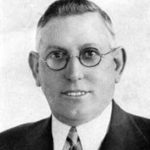People in Glebe's History

Who lived in your street? Margaret Colbourne
Staunch trade unionist and member of the Toxteth branch of th ALP, Margaret Colbourne, née Margaretta Mitchell, lived and worked in Glebe all her married life, from 1894. Her name lives on in Colbourne Avenue, off St Johns Road.
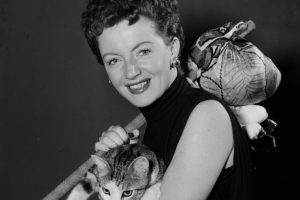
Pat (Patricia) Gregory, ice skater
She could do the splits over a metre in the air and land gracefully on her skates. Pat Gregory, whose childhood home was in Broughton Street, Glebe, had a brilliant international career and was awarded the International Gold Medal for Ice Skating.
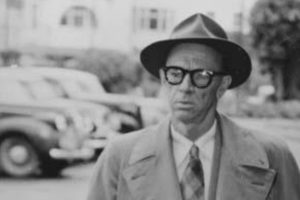
Comrade Clayton of Glebe Point Road: Walter Seddon Clayton
The KGB called him ‘Klod’ – he was a Soviet spy and, in the 1940s, a resident of Glebe. Active in the Communist Party of Australia, Wally Clayton dropped from view after the Petrov affair, where his role in Soviet espionage was revealed. Lyn Collingwood tells his story.
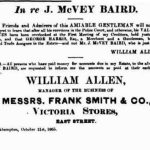
Who lived in your street? John McVey Baird and family of 268 Glebe Point Road
Members of the Baird family lived at today’s 268 Glebe Point Road for over seven decades. Their house called Eglinton was demolished in 1968 and home units now cover the site. The present building next door at Number 270 dates from 1891, replacing another which was Eglinton’s twin. The history of the occupation of Eglinton is fascinating.

Christina Clark of Arcadia Road and her descendants
The Clark family lived in three Arcadia Road houses for the best part of a century. Around the turn of the 20th-century, Christina Clark bought two lots in the Toxteth House Estate from George Boyce Allen and built the eye-catching two-storey semis at Numbers 12 and 14 Arcadia Road. The more modest 16 Arcadia Road was built by her son a few years later. Find out about this family and their longstanding connection with Arcadia Road.
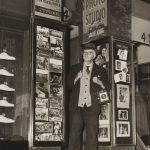
Samuel John Hood, aka Sam Hood
Commercial photographer and photojournalist Sam Hood lived at various addresses in Glebe and the suburb featured in many of his iconic images of everyday life, taken in early decades of the 20th century
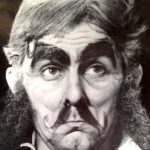
Les Tanner (Blue Plaque nomination #12)
Les Tanner, one of Australia’s best-known cartoonists, grew up in Glebe. In a continuing series, the Bulletin nominates his childhood home as a suitable site for a Blue Plaque.

Sister Catherine Mary Bell
Sister Catherine Bell, a nun with the order of the Sisters of the Good Samaritan, taught at St Scholastica’s School in the 1940s, before teaching in numerous places throughout NSW, Qld, SA and WA. She returned to Glebe and St Scholastica’s in her retirement in 2010. She was described as a wonderful caring woman.
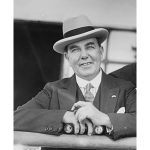
Richard Beaumont Orchard
Richard Orchard was one of the celebrities sketched in Sydneyites as we see ’em, published in 1915. He was then living at 22 Allen St, Glebe, He had a varied career including as a jeweller and politician.

William Alston Hutchinson
William Alston Hutchinson (1839-1897) was a manufacturer, merchant, colliery director and politician. He and his family lived at Alston House in Glebe Point (now part of 501 Glebe Point Rd). He was an alderman for Glebe in the 1880s and became Mayor in 1896. .
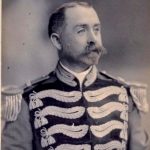
Ludolph Waldemar Marcker
Ludolph Marcker was the Danish Consul in the early 1900s. He lived in three houses in Glebe/Forest Lodge: 16 Lodge St, 77 St Johns Rd (now 155 St Johns Rd) and 8 Kennedy St (now 49 Leichhardt St), known as Bornholm after the Danish island where he was born.

Ian Jones
Following a long and distinguished career as an engineer and scientist, particularly in the field of oceanography, Ian Jones made a significant contribution to Glebe through his involvement in the landmark Glebe Main Street Project.
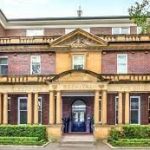
Enid Craig Christie MacDonald (1889-1986) and Margaret Hilda Harper (1879-1964)
Doctors Margaret Harper (1879-1964) and Enid MacDonald (1889-1986) were resident medical officers at the Royal Alexandra Hospital for Children on the corner of Bridge Rd and Booth St, Camperdown, which replaced the earlier Sydney Hospital for Sick Children in Glebe.
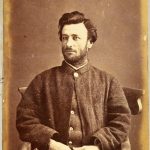
Robert Fitzgerald Nichols (aka George Robert Nichols)
During the 1860s, Robert Fitzgerald Nichols, lived on Glebe Point Rd. Although from a respectable family and well-educated, he was in trouble with the law from an early age and was later convicted and hanged for murder.
Jane Barker (nee Harden)
Who was Jane Harden and where is Harden St? Jane Barker (nee Harden) influenced the layout and naming of streets in the Bishopthorpe Estate. Harden St was what is now Mitchell St between Glebe Point Rd and Catherine St.
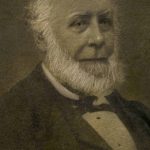
John Korff
John Korff, a qualified shipbuilder and naval architect arrived in Sydney in 1835 and first settled on the Hunter. He had a dry dock in Glebe and lived in Hereford St.
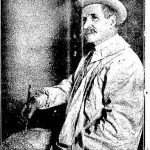
William Priestly Macintosh
William P. Macintosh was responsible for fine sculptures at the entrances to the Queen Victoria Building and many other public buildings in Sydney, Brisbane and Canberra. He migrated from Scotland in 1880 and moved to in Glebe in 1888..

George Allen
Born in London in 1800, George Allen came to Sydney in 1816 with his mother and siblings. He was articled to the government solicitor and was admitted as a solicitor in 1822, the first solicitor to receive his training in NSW. The law firm he established is known as the oldest law firm in Australia and is today part of the international firm, Allens Arthur Robinson.
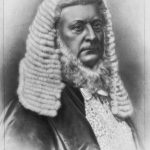
Sir George Wigram Allen
Solicitor, politician and philanthropist, George Wigram Allen was a long-serving Mayor of Glebe as well as member of Parliament for Glebe.
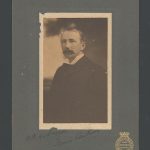
Sir Francis Anderson
Sir Francis Anderson, philosopher and educationist, was Sydney University’s first Challis professor of logic and mental philosophy. Critical of the pupil-teacher system that prevailed in NSW at the time, and of the rigidity of curriculum and teaching methods, he adopted the slogan “Train the Teacher, Trust the Teacher and Pay the Teacher” and helped develop what became known in NSW as the New Syllabus. He married Maybanke Wolstenholme, née Selfe, in 1899.
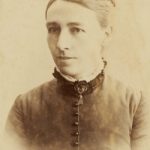
Maybanke Anderson
Maybanke Anderson, feminist and educationist, was involved in a wide range of reformist issues, especially relating to women. She was a member of the Womanhood Suffrage League, the International Women’s Union, and edited and published Woman’s Voice, a fortnightly journal covering social issues. She established the Playgrounds’ Association and the Kindergarten Union, providing free pre-school care for poor families within walking distance of their homes.
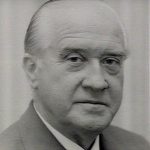
Sir Robert Askin
Askin joined the Liberal Party in 1947 and was elected as the member for Collaroy in 1950. He continued as member of the NSW Legislative Assembly from 1950 to 1975, and Premier from 1965 to 1975. Named Robin at birth, Askin changed his name to Robert before receiving a Knighthood (KCMG), on his own recommendation, in 1972. His reputation was marred by serious allegations of corruption.
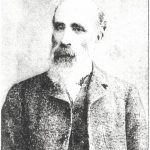
James Johnstone Barnet
Scottish-born James Barnet held the post of Colonial Architect for 25 years during a period of major expansion of the colony. He was responsible for some of Sydney’s iconic buildings, including the GPO in Martin Place, the Lands Department Building (Bridge Street) and the Australian Museum (College Street).
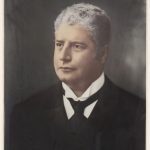
Sir Edmund Barton
Sir Edmund Barton was Australia’s First Prime Minister, from 1901 to 1903. He rose to prominence in NSW politics before strongly supporting the push for Federation of Australia’s states. As Prime Minister he played an important part in establishing the workable machinery of government and cementing the Federation. After politics, Barton became a judge of the new High Court of Australia.

Edmund Blacket
Edmund Blacket was born in Surrey, England and arrived in Sydney with his wife Sarah on the emigrant ship Eden in 1842. In 1847 he was appointed Diocesan Architect and two years later was appointed Colonial Architect.
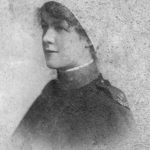
Leila Mary Brown
Nurses with connections to Glebe answered the call to serve in WWI. One of these women was Leila Mary Brown who served with the First AIF Nursing Corps in Egypt, England and France.
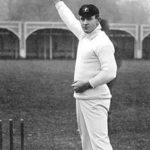
Albert “Tibby” Cotter
“Tibby” Cotter is regarded a possibly the best fast bowler of the first decade of the 20th century. His pace, and habit of frequently breaking the stumps and occasionally the batsmen, earned him the nickname of “Terror” Cotter in England. He joined the AIF in 1915 and served at Gallpoli. In 1917, he was shot and killed at Beersheba probably by a Turk who had surrendered but not given up his weapon.
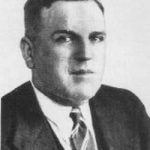
H J Foley
“A legendary figure of inner west local politics was hailed as a ‘wonderful bloke and a fabulous doctor’ after his death …” adding that “… he will always be remembered as a champion of the underdog and the worker.”

Bessie Guthrie
Bessie Guthrie was trained in Design and worked professionally in various design fields from the late 1920s until about 1950. She established Viking Press in 1939. Throughout her life she was a crusader for children’s rights and against the institutional abuse of women. She welcomed the Women’s Liberation movement, and was active in the establishment of Elsie Women’s Night Shelter, the first women’s refuge in Australia.
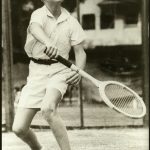
Lewis (Lew) Hoad
Lew Hoad was a prominent tennis player in the 1950s. For five straight years, beginning in 1952, he was ranked in the world top 10 for amateurs, reaching the World No. 1 spot in 1956. He represented Australia in the Davis Cup with Ken Rosewall, winning the Cup for Australia four times from 1952-1956. Hoad turned professional in July 1957. He was widely regarded as one of the most naturally talented of tennis players.
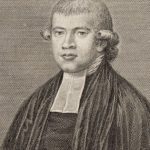
Richard Johnson
The Rev Richard Johnson was a Church of England clergyman who served as chaplain to the colony of NSW from 1788 to 1800. He was also a successful farmer at Canterbury Vale and Ryde.
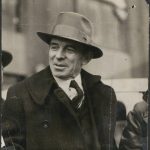
James Francis (Frank) Hurley
Frank Hurley, who was born in Glebe in 1885, is best known today as a photographer and filmmaker who worked in the Antarctic with Mawson and Shackleton, was official photographer during the two world wars, and made expeditions to Papua during the 1920s. The :‘synchronized lecture entertainments’ that Hurley put on in the 1910s and 1920s were stage and screen performances exploiting a number of media.
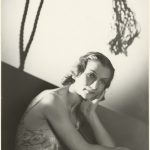
Hélène Kirsova
Hélène Kirsova was a Danish-born ballerina who came to Australia with the famed Ballets Russes de Monte Carlo. Along with some of the other dancers, she stayed in Sydney after the outbreak of the Second World War in Europe. She created Australia’s first professional ballet company, a forerunner to the Borovansky Ballet, and was also active as a choreographer.

Sir Douglas Mawson
Geologist and explorer, Mawson is best known for his exploratory expeditions to Antarctica. He joined Shackleton’s expedition from 1907-9, and headed the Australasian Antarctic Expedition of 2011 – 14. The scientific work he undertook in this and later expeditions formed the basis for Australia’s claim to 42% of Antarctica as Australian territory.
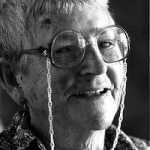
Edna Ryan
Edna Ryan was a leading figure in three eras of feminism in the 20th century. As a feminist and labour activist she is credited with achieving equal pay for women, maternity leave and work based child care. Ryan wrote numerous articles, conference papers, submissions to government and two books, Gentle invaders (1975) and Two thirds of a man (1984).
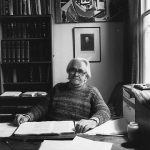
Bernard Smith
In 1967 Bernard Smith was appointed Foundation Professor of Contemporary Art and was Director of the Power Institute of Fine Arts, University of Sydney. Prior to this, he held senior appointments at the University of Melbourne. He was a painter (using the pseudonym Joseph Tierney), writer, teacher, critic, philanthropist and a Fellow of the Australian Academy of the Humanities.
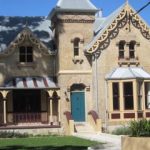
Ferdinand Hamilton Reuss
Ferdinand Reuss (pronounced Royce) was the British-born son of a Royal Prussian Consul. Reuss trained as a civil engineer in the firm of Robert Stevenson, the great lighthouse engineer and grandfather of Robert Louis Stevenson. Reuss migrated to Australia in 1851 and was active as an architect and builder in Sydney during the 1870s and 1880s. He is also regarded as the father of surveying in Sydney.
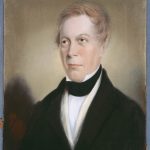
John Verge
John Verge was a leading society architect and builder of the 1830s in Sydney and an exponent of the Regency style. His clients included John Macarthur and William Charles Wentworth. Verge’s work can be seen at Elizabeth Bay House, Camden Park, Tempe House and the vestries and eastern porches of St James Church, King Street.



